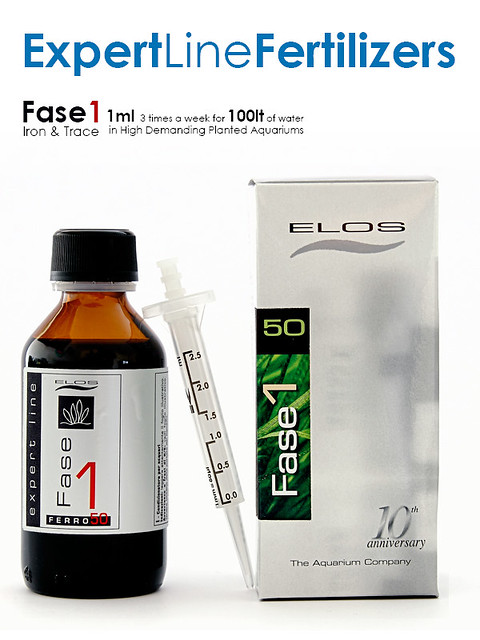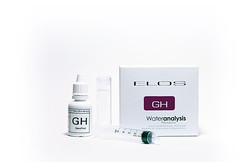Thursday, February 16, 2012
Friday, August 26, 2011
One Step Closer 60L - Final Chapter
Monday, August 22, 2011
Update and preparation for final shots
Tuesday, August 02, 2011
Monday, August 01, 2011
How my 60lt tank looks like today
Maybe I will not keep this layout for much time for several reasons...
- Anubias nana mini, even with small leaf is too big for what I was expecting.
- It takes too much time to grow and cutting the bigger leafs will let the branches naked for long, long time.
- To get the best shape it will take months trimming and trimming the Hemianthus while Anubias grow.
Thursday, June 09, 2011
One Step Closer ' June 2011
Saturday, May 28, 2011
60L Video on Vimeo.com
Youtube restricted this video in some countries, so I upload it again but in a different host; in Vimeo.com. I hope that this avoid any kind of restrictions and anyone can see it. Any problem just let me know.
One Step Closer ' 40 days after Setup from FAAO on Vimeo.
Setup (15.April.2011)
Aquarium: 55x35x35 cm (L x T x W)
Lighting system: ELOS E-Lite Leds Technology
Filter: Hang on filter
Substrate: ELOS Terra Zero + ELOS Bottom Mineral + ELOS Terra (small)
CO2 System: ELOS Set-ECO with Solenoide valve 1,2bps
Plants from Aquaflora: Hemianthus callitrichoides cuba, Anubias nana mini (petit) and Eleocharis aciculares.
Fertilization: Elos Fase1, Fase2 and K40
Music by: Israel Kamakawiwo Ole - Somewere Over The Rainbow
Wednesday, May 25, 2011
Update of my 60L Aquarium with 40days after setup
Tuesday, May 24, 2011
Liquid Fertilization PART 2/3


Let’s see the case of the appearance of green dust algae.


ELOS Fase1 is composed by chelated irons (Fe-EDDHA, Fe-DTPA, Fe-EDDCHA) and micro elements (boron, zinc, molybdenum, manganese etc.) and can be used as unique liquid fertilizer in low demanding planted aquariums.
As potassium, there isn’t available on the market Iron tests for chelated Iron, so it means that any brand that supplies iron water’s test for measuring the iron that they produces, they are selling “shitty” products and Iron is not chelated. Fertilizing with no chelated iron is the same of polluting the water, that iron will not be absorbed by the plants and if you fertilize on the same time with phosphorous, the probability of get filamentous algae is of 90%.
Friday, May 20, 2011
New update of 60L Aquarium - 35 days after setup

Friday, May 13, 2011
Wednesday, May 11, 2011
Liquid Fertilization PART 1/3
Very simple... We need to divide the subject in 3 parts; measure the levels of nutrients choosing the right tests, use a good liquid fertilizer with nutrients required by plants and find the balance between nutrients vs CO2 and Lighting.
PART1: Choosing the right tests
What really makes me some confusion is when I talk with somebody about planted aquariums and maintenance, they refer that are using powders to fertilize their aquariums without knowing what are doing... They read somewhere that for keeping aquatic plants in aquarium need phosphorous, nitrates and potassium; basis nutrients as known by NPK. It is too scary listen those people saying that dose 20ml daily of each or even more, depending on the size of the aquarium... but the plants really need such quantity of liquid fertilizer? Unless the concentration of each liquid fertilizer is too small that can permits to add to the water's column what I usually call of Water's fertilizer; 98% of water with 2% of nutrients! But this is not a problem, the main problem is they are doing that without knowing the measures because they don't use tests and when they have it, don't have the right ones. Please don't make confusion with NO2 and NO3, both began with the letters "NITR", but one is Nitrites and other is Nitrates.
To keep a planted Aquarium you will need several tests like PO4 (phosphates), NO3 (nitrates), gH (general hardness), kH (carbonate hardness) and pH (acidity test).
Do we need all of them?!
If you want to keep and know what is happening with your aquarium, you should have them and not wait too long to make some tests when something really happens. Usually I compare this with insurances; people that have them are always complaining about the money that spend with them without taking any benefit, until someday when something happens, they regret for don't have it or gave up because they didn't need it.
Tests are more or less the same, we can have them for a long time without using them, but when the plants get algae, are doing meltdown or weak, some fishes start dieing... something is not right; and if you can take care of the problem as soon as possible, better for the healthy of your plants and fishes.
And what about strips tests, are they good?
The strips tests and even some drops tests aren't too good... to have an idea of the measure values they are nice but not good because most of the time give us different values even when you do it 2 or 3 times in a row.
I remember one time that I was doing a maintenance at one planted aquarium that was full of algae and the test used gave nitrates always above 25ppm. I will not reveal the brand, but I can assure that I will never use or recommend that to a friend or customer. On that tank we have done several water changes waiting that NO3 get normal values or stay near of zero without success. We tested the tap water and the values of NO3 were really high, finally we discover the problem; it was the tap water... or not, because this is not the end of the story! This situation was so strange because the plants stopped growing and all the nutrients were there; The aquarium was well equipped with CO2 and Lighting, no visible reason for that. It was when I remembered to use a different test from other brand; surprisingly the water wasn't NO3 at all!!!! Not satisfied, I used my own tests and the water of the aquarium and tap water were free of Nitrates... The plants were plenty of algae because of a lack of nutrient and not excess.
If this happened to me and I was using tests (the bad tests on the beginning), I really don't understand how people can keep a planted aquarium without them.
You can see if a test is good or not when you do several tests in short period of time; if the results are different from one test to another, those tests are nice to have an idea but not good to have precise values. Having 10ppm of nitrates is not the same of having 20ppm.
The ELOS NO3 test Kit is precise and unique on the market. You can measure the nitrates of your aquarium in a scale of 1ppm~25ppm (1-2.5-5-10-25ppm); to do the test you only need to use 5ml of water into a vial, measure spoon of 0,15ml of Reagent A and 6 drops of Reagent B; very simple and easy!
Tests of gH and kH are really needed?
Any planted aquarium that uses argyle as a soil, wood and CO2 usually the water change a little bit his own properties. It become more soft and sometimes we have big surprises.
To raise the values of gH, I recommend the use of ELOS Rigenera because contains the right proportion of Calcium and Magnesium.
Carbonate hardness kH needs to be above 3º to have a stable aquarium, otherwise the water can be very acid and we have a big problem for plants and fishes because pH goes down very quickly and could pass from 7 to 4 without you noticed that. Some plants start doing meltdown and disappear from the aquarium; please don't make confusion with cryptocorynes. This plant can simply do a meltdown when some parameters oscillate, don't panic because in a few days (2 weeks) will born again. The general meltdown of some plants (not cryptocoryne) can result from the high acidity of the water. In case of you need to raise carbonate hardness of the water you can use Kh+ (buffer) slowly to avoid great oscillation of water's parameter.
Friday, April 29, 2011
Maintenance day - 13 days after setup
Some people think that keeping a planted aquarium needs to spend a lot of time in the maintenance, but they are wrong. If we spend 5~15min every day doing small things, like add liquid fertilizer, feeding the fishes, cleaning the glasses or maybe a water change; the general maintenance is easy and fast! We just need to schedule very well all the needs and have some rules.
Even if we don't do something daily, a balanced aquarium can be easily cleaned, just see the following video:
To have an idea, I spent 45min doing this maintenance and I was worried about the camera, seeing if it was recording or not... so usually to do something like this, I spend 15~20min at most.
Some algae appeared but nothing to complain... It is quite normal in a new layout, but if you detect on time, is very easy to control and remove it. On the video above you can see the difference between before and after! No tricks and no photoshop...
Wednesday, April 20, 2011
Day4 - Bad fortune :-(
I forgot that a maintenance company was on the building cleaning the water’s deposit; and on the afternoon during a normal maintenance to my aquariums I decided to do a water change to my small aquarium. Fortunately, I didn’t change the water of my 350L aquarium, which was scheduled for today; otherwise the problem would be more dramatic than this.
When I saw the fishes reacting differently and tremble, was too late for do something. My first reaction was went into the kitchen and fill a cup of water and taste it, the smell was very strong at chloride and when I tasted the water, I just noticed that wasn’t normal. Usually I don’t use any anti-chloride on my aquariums and even that I had some at home, the fishes died so fast that no product could save them…
I’m very pissed off because I simply forgot of the water’s maintenance and it was very difficult to find those fishes!!! I hope that nothing happen with the plants… wish me luck!
Tuesday, April 19, 2011
New pictures of my new layout

Setup:
Setup date: 15 of April 2011
Aquarium: Elos custom made in optiwhite 55x35x35
Lighting system: E-Lite (Led Technology)
Filter: Hang On Filter
Temperature: 18~21º ambient temperature (no heater)
CO2 System: ELOS Set ECO with ATO-10, Bubble counter and EV2000 (Solenoid valve)
Substrate: Elos Terra Zero, ELOS Bottom Mineral and ELOS Terra Small
Fertilization: Not yet
Plants: (special thanks to http://www.aquaflora.nl/)
Hemianthus Callitrichoides and Anubias nana mini
Fishes: Rasbora brigittae



















